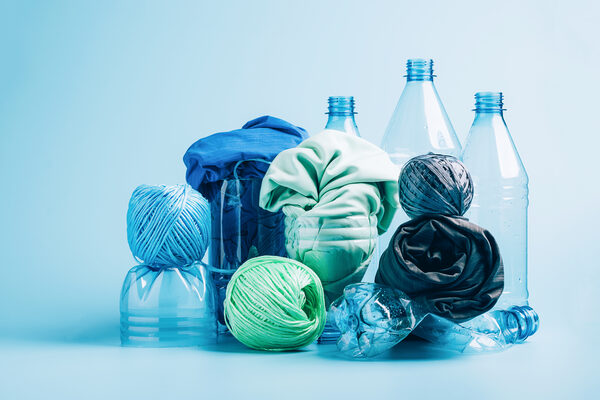Green Fashion: the value of collaboration for Sustainable Growth
The new frontiers of responsible Fashion between circularity and Supply Chain governance
Viktoriia Shiriaeva, Presales Specialist of Deda Stealth
What is the meaning of “sustainable”, today?
In the present day, the concept of sustainability
is no longer new to our daily lives. In recent years, in fact, this term has
made its way into a wide variety of fields like chemistry, biology, law,
economics, architecture, management, and more. The deepest meaning of “sustainability,”
however, has undergone an evolution driven by several factors, first and
foremost the growing consciousness of the need to establish principles and
instruments to make it a reality. We can see, in fact, that the number of
internet searches related to the term has increased since 2014, as well as
social discussions around the topic. The subject has become so mainstream that it now seems (almost)
commonplace and obvious to hear about it. Sustainable development is an
important topic on the agenda of several industries, including Fashion.
This is
good news since, even today, the fashion industry is responsible for about 10%
of CO2 emissions and is the fourth-highest consumer category in the European
Union for water consumption and primary raw material use.
Along with governments, States, and citizens,
companies are also being called on to play their part, and the European Union's
efforts in raising business awareness of safeguarding the planet are steadily
growing. The 2030 Agenda and the 17 Sustainable Development Goals are proof of
this, as well as the concept of Social Corporate Responsibility introduced by
the European Commission in 2001 and defined as "the voluntary integration
of companies' social and ecological concerns into their business operations and
their relations with stakeholders." A challenge with clear intentions:
integrating social development and environmental protection programs into the
roadmap of business objectives.
People often fall into the misconception that
the solution to global challenges concerns only large companies. Indeed,
regardless of its size, every company is part of a globalized ecosystem from
which it draws to store resources (and not just economic ones), to carry on its
business. Everyone then, can make a difference, and today, thanks to
technological innovation and research, companies can count on various
possibilities and alternatives to incorporate sustainability into their daily
activities, thus contributing to the generation of value for the company and
the planet in the long run.
The fashion industry, whose supply chain impacts 90%
of the environment, now has good alternatives available that include
biodegradable, regenerated textile fibers, or those derived from waste
materials. This is the case of Orange Fiber, a young Sicilian start-up that has
made a type of fabric by recovering residues produced by citrus farms, or Apple
Skin - a vegan leather made in Italy.
As a final point, it is not necessary to use
innovative raw materials, lots of times it is enough to use different
processing techniques, for example, fabric dyeing techniques that use less
water, or innovative dyeing techniques using bacteria.
This is the beginning of a long and challenging journey of transformation. Why are we already tired of hearing about it?
The proliferation of generic statements and
claims such as "green," "ethic," and "environmentally
friendly" that, when not backed up by real data, cause false expectations
and create misunderstandings over time, leading to a growing suspicion of
"greenwashing" among consumers and a loss of credibility for
companies. Industries, including Fashion, have a responsibility towards
their customers which is to perform acts of honesty by communicating correctly
and transparently their commitment regarding the sustainability issue. Moreover,
companies must always keep in mind that sustainable development is not only
about saving the planet, but it is also, and perhaps above all, an important
social and governance issue. The initial frenzy and lack of solid guidelines on
how to communicate sustainability, somewhat ruined the "game" for
everyone, probably without even realizing it. In fact, in so many cases
greenwashing occurs because of inaccurate and partial communication, rather
than because of a genuine intention to deceive the consumer. No more time to
waste, we need to earn the trust of consumers and continue to cherish it.
Positive thinking drives action
There are two main types of thinking about sustainability: the first is problem-oriented, and the second is solution-oriented. On social media, people are much more likely to participate in conversations about solutions, which represent, in fact, 77% of total conversations on the topic. Under this historical phase, which is characterized by the feeling of disillusion, the protest methods carried out by climate activists often turn out to be extreme and out of place, to the point of provoking anger and disgust in front of setting like blocked streets or damaged works of art. However, these actions infused with negative emotions, such as fear of the future, uncertainty, or arrogance, do not motivate the consumer to act and, on the contrary, they cause him or her to feel guilty.
Nevertheless, this is only one of the latest motivators in the push toward sustainable choices and behaviors. On the contrary, the feeling of comfort we perceive whenever we perform a simple gesture such as avoiding running water while brushing our teeth, or using biodegradable dishes during a picnic, is the result of a positive feeling, i.e. hope, which in turn, inspires action. As a matter of fact, according to some research completed by Pulsar Trac, it appears that hope is one of the strongest and most relevant motivators driving people to take sustainable actions.
Fashion and Sustainability: factors for a possible combination
Climate change has certainly made it clear that
our consumption patterns cannot work much longer. According to a study conducted
by the EEA (European Environment Agency), garments, footwear, and textiles
represent the fourth highest consumption category in the EU when it comes to
water, land, and energy use, after food, housing, and transportation. Luckily,
given this evidence, consumers are increasingly aware and demanding. They are
not only looking for beautiful clothes to wear but rather for clothes and
accessories produced without jeopardizing the planet's conditions and the
safety of employees.
People are also much more careful about waste, garbage
management, and over-production problems.
Just think that every year the total production
volumes of the fashion industry increase by 2.7%. Among fashion labels, there is
an increasing acknowledgment that a change is necessary, and several brands
have committed to promoting meaningful transformation, even though the path is
not clear yet. Indeed, 10 years after the Rana Plaza tragedy, the fashion
industry has made some progress, but the pressure for a more respectful supply
chain that protects the balance of the planet, and the well-being of workers is
growing. It can be said that the concept
of sustainable fashion fits well into a broader concept of a sustainable
society: yes, because sustainability is first and foremost cultural, and culture
is driven by people.
We recently attended the PI Apparel Supply Chain Forum in Amsterdam, an event entirely dedicated to the fashion supply chain. Even from the partners present with their booths, it was easy to guess the priority of this historic moment for the Fashion industry: all the proposed solutions were aimed at supply chain management in various connotations, from traceability to collaboration and integration. As part of the event, we also had the opportunity to hold a Think Tank, and through the comments and contributions made by the participants, we discovered that in some countries (e.g., Denmark, the Netherlands, and Sweden) there is specific legislation coming up that we still hear little about. While these regulations are currently confined domestically, they are always designed to improve the traceability and sustainability of the supply chain of products sold in different European countries, so it is important to be informed and prepared when the time comes to comply with these standards and legislations. There is great interest and also a widespread understanding of the issues in the industry, and this is definitely a very good indicator of the importance of these issues to the fashion industry. However, several challenges await fashion brands, and there is still a long way to go. The year 2030 is not that far away and time should not be wasted.

At Deda Stealth, we are closely observing the
market's needs for sustainability, creating optimized solutions for supply
chain traceability and transparency. There is certainly still a long way to go
for the fashion industry, but we have already accepted this challenge and we
want to support this much-needed change, together with other qualified partners
and entities as well. Technological innovation can and must necessarily be an
active part of the solution, along with the transformation of the industry
itself.








